This new subspecies of Dactylorhiza is the result of a substantial study by Bateman and Denholm into the
tetraploid marsh orchids of Britain and Ireland. The results were published in a 2012 paper to the New Journal of Botany and conclude that there are just four full species :- D. traunsteinoreides, D. kerryensis D. praetermissa, and D. purpurella. This compares for example, with the eight full species detailed by Delforge in 2006, which also included D. occidentalis, D. ebudensis, D. cambrensis and D. lapponica.
What is now regarded as D. praetermissa ssp schoenophila were previously considered to be examples of D. traunsteineroides that occurred in small numbers in Southern England, especially in the fens of East Anglia. These colonies had however been viewed with suspicion for several years and many already felt that whilst they may have conformed with D. traunsteineroides at some point in their evolution (possibly even recently), introgression by the more robust D. praetermissa had left the plants with little of this former identity. The new evidence now reveals that these plants display a DNA profile that accords most closely with D. praetermissa and further that D. traunsteineroides has no constituent DNA involvement. The prevailing view therefore is that populations in the UK below a line from the Severn to the Wash are not as was previously thought and should be more correctly classified as being subspecific to D. praetermissa. The new taxon's name refers to to the Fens in which it grows and its consequent close association with the dominant bog rush, Shoenus nigricans.
This is a smallish, spindly orchid with a loose inflorescence of rarely more than 18 flowers. The bracts are usually prominent and coloured brownish red. It only grows in fens but there are very few of the known colonies that do not grow in reasonably close proximity to D. praetermissa and introgression would seem inevitable. The pure type subspecies does however persist and is easily distinguishable by its smaller stature, narrower leaves and looser inflorescence.
tetraploid marsh orchids of Britain and Ireland. The results were published in a 2012 paper to the New Journal of Botany and conclude that there are just four full species :- D. traunsteinoreides, D. kerryensis D. praetermissa, and D. purpurella. This compares for example, with the eight full species detailed by Delforge in 2006, which also included D. occidentalis, D. ebudensis, D. cambrensis and D. lapponica.
What is now regarded as D. praetermissa ssp schoenophila were previously considered to be examples of D. traunsteineroides that occurred in small numbers in Southern England, especially in the fens of East Anglia. These colonies had however been viewed with suspicion for several years and many already felt that whilst they may have conformed with D. traunsteineroides at some point in their evolution (possibly even recently), introgression by the more robust D. praetermissa had left the plants with little of this former identity. The new evidence now reveals that these plants display a DNA profile that accords most closely with D. praetermissa and further that D. traunsteineroides has no constituent DNA involvement. The prevailing view therefore is that populations in the UK below a line from the Severn to the Wash are not as was previously thought and should be more correctly classified as being subspecific to D. praetermissa. The new taxon's name refers to to the Fens in which it grows and its consequent close association with the dominant bog rush, Shoenus nigricans.
This is a smallish, spindly orchid with a loose inflorescence of rarely more than 18 flowers. The bracts are usually prominent and coloured brownish red. It only grows in fens but there are very few of the known colonies that do not grow in reasonably close proximity to D. praetermissa and introgression would seem inevitable. The pure type subspecies does however persist and is easily distinguishable by its smaller stature, narrower leaves and looser inflorescence.
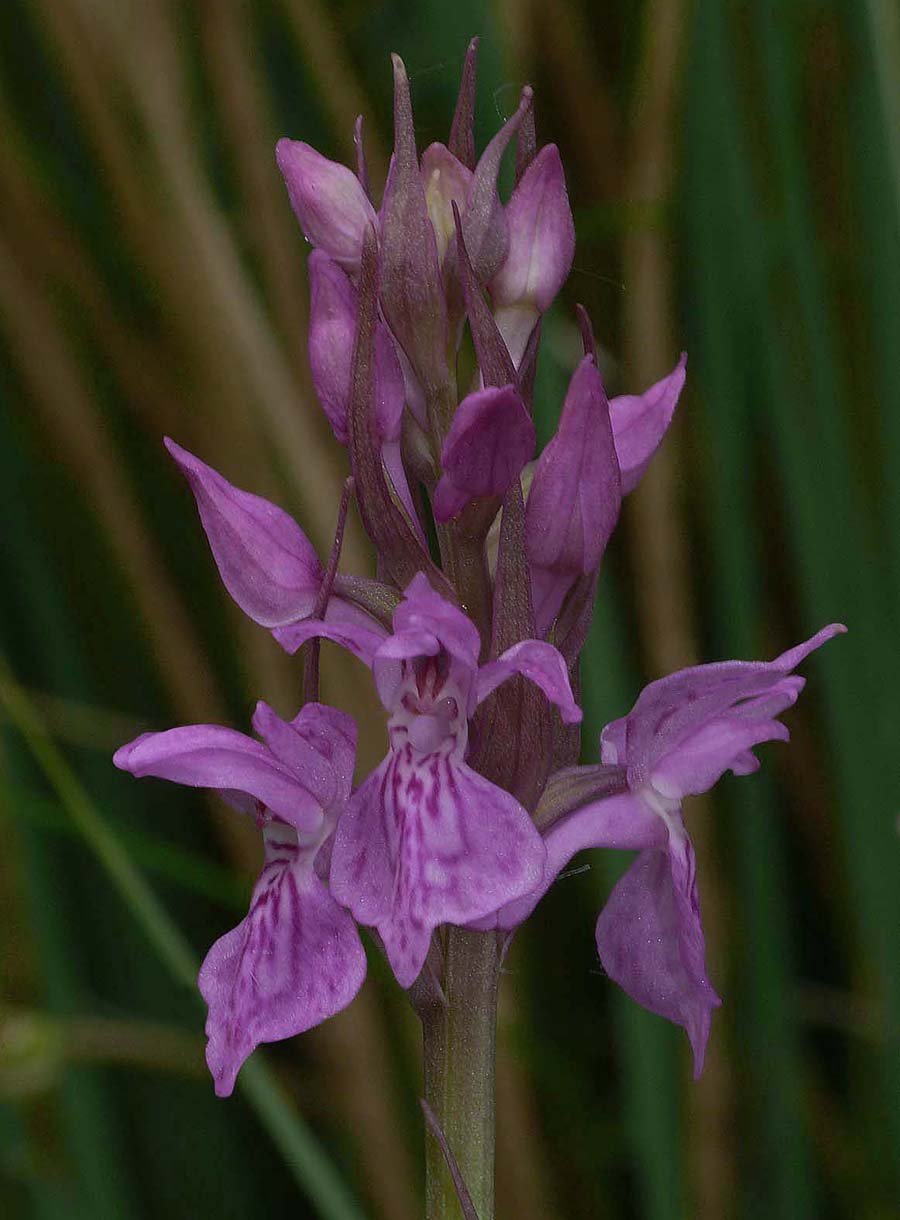
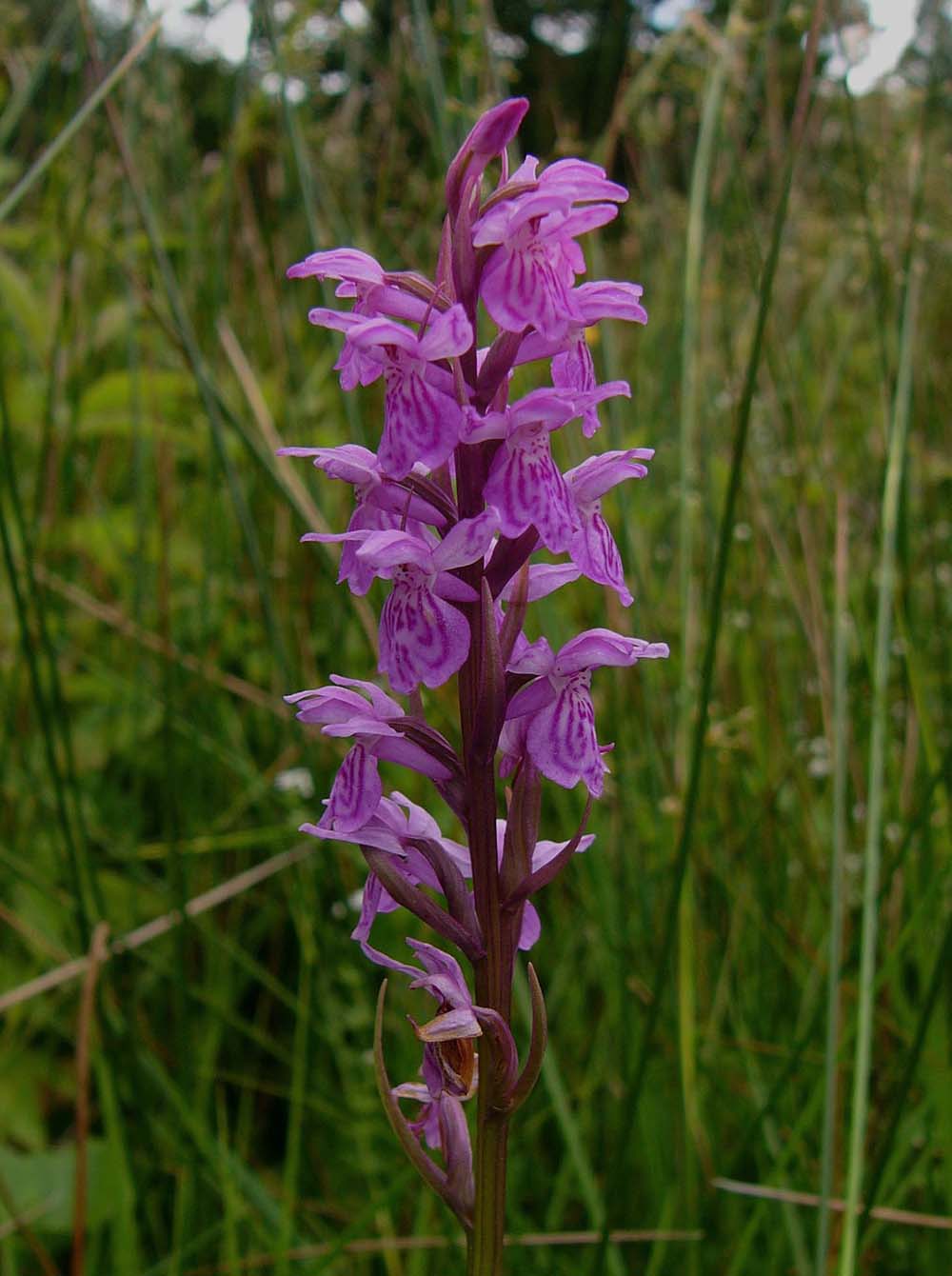
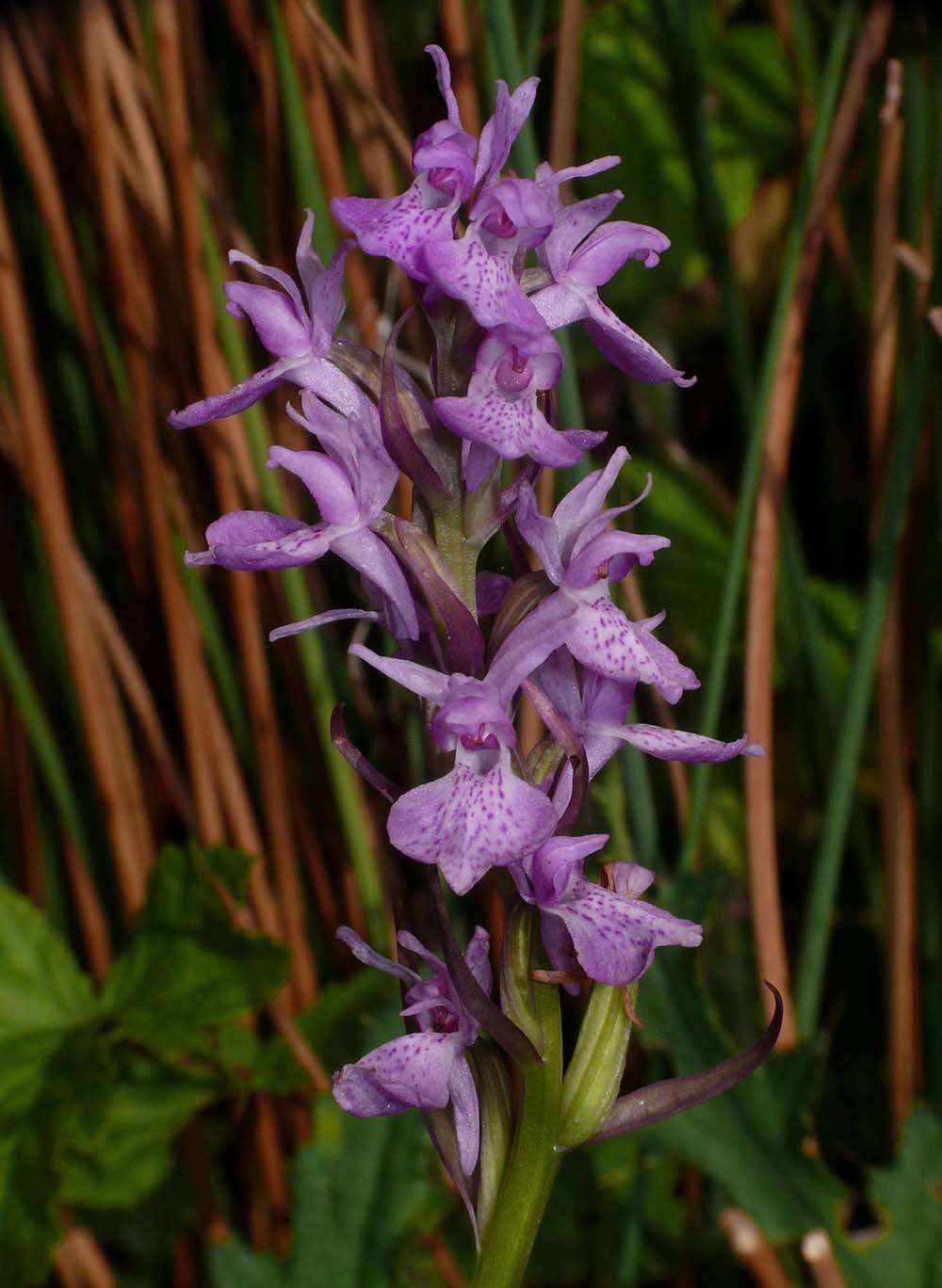
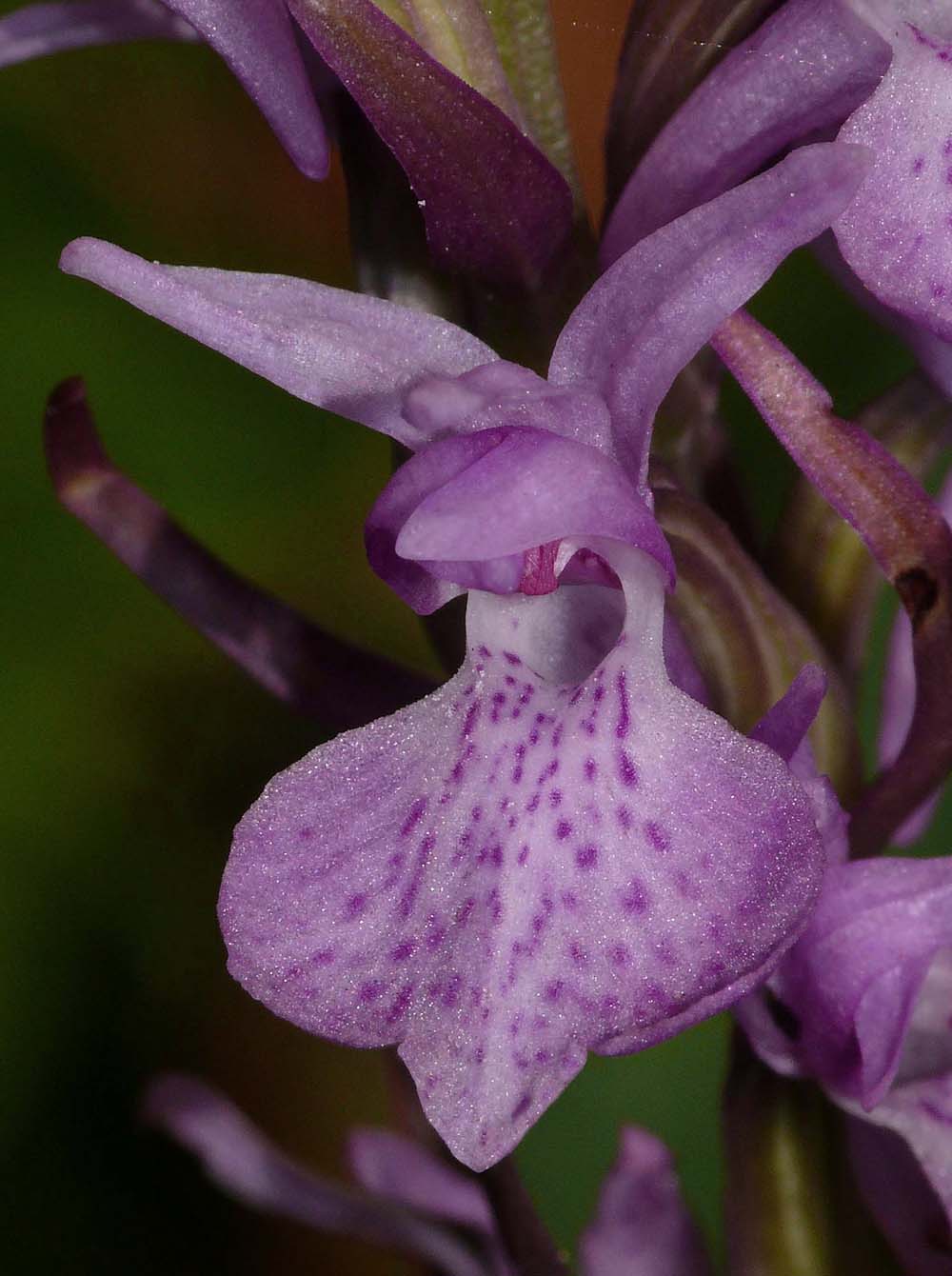
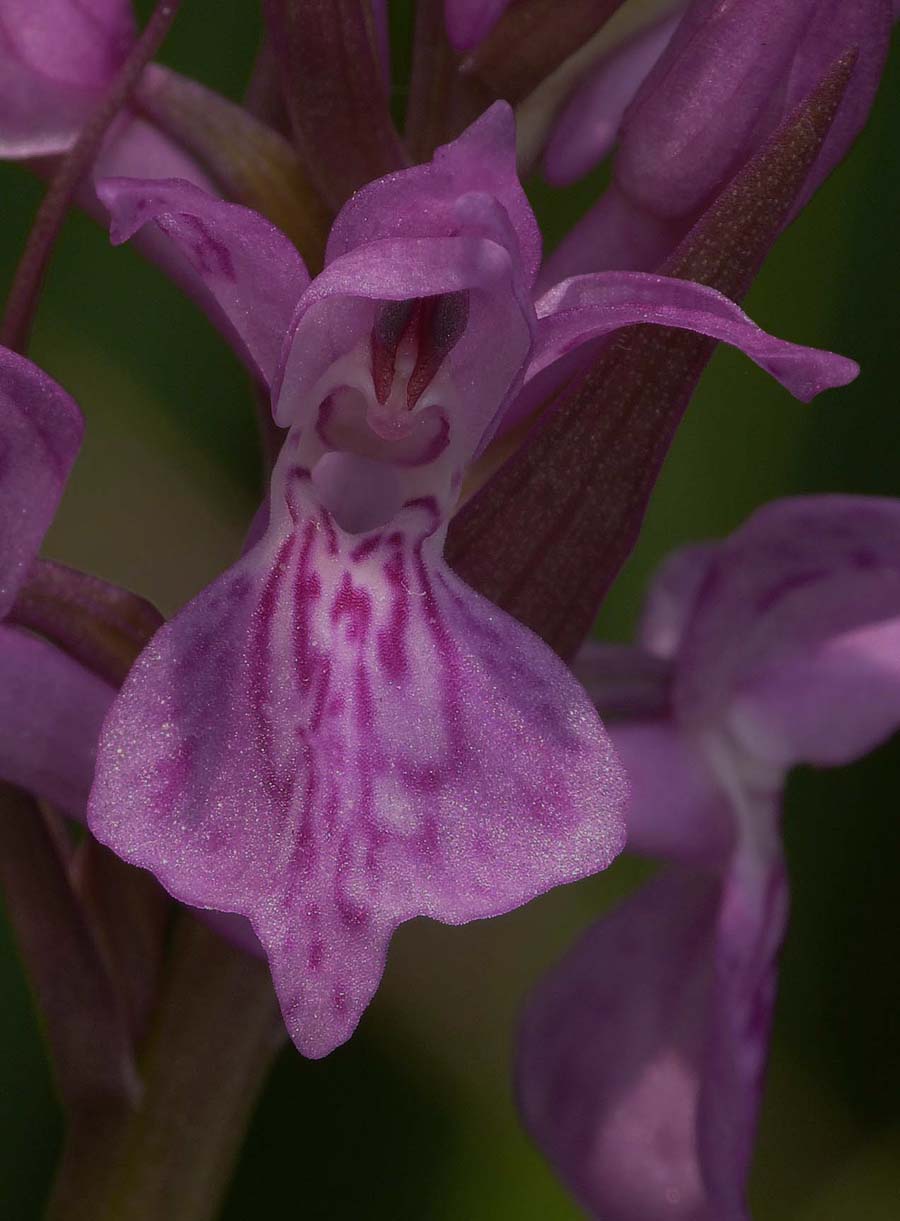
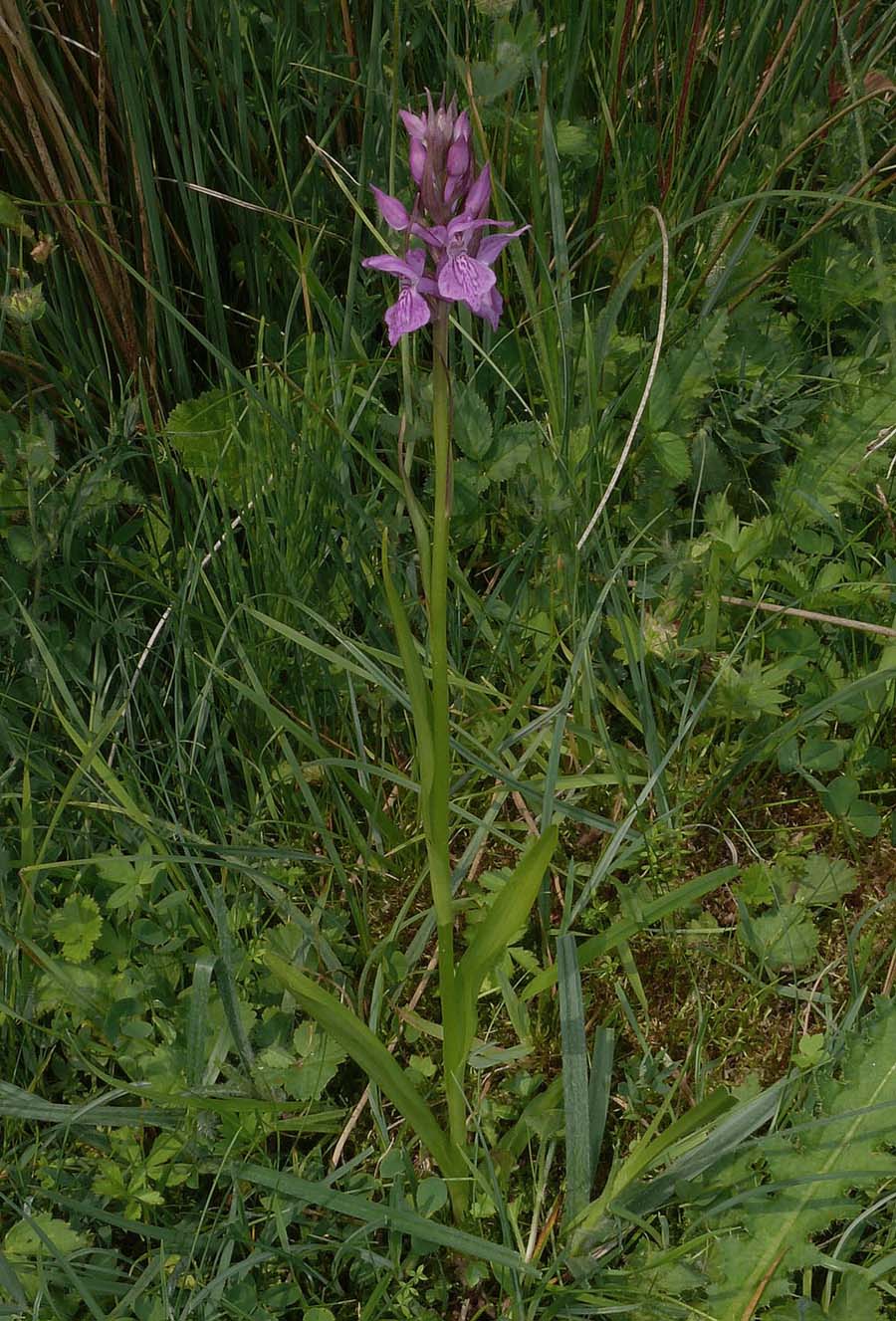
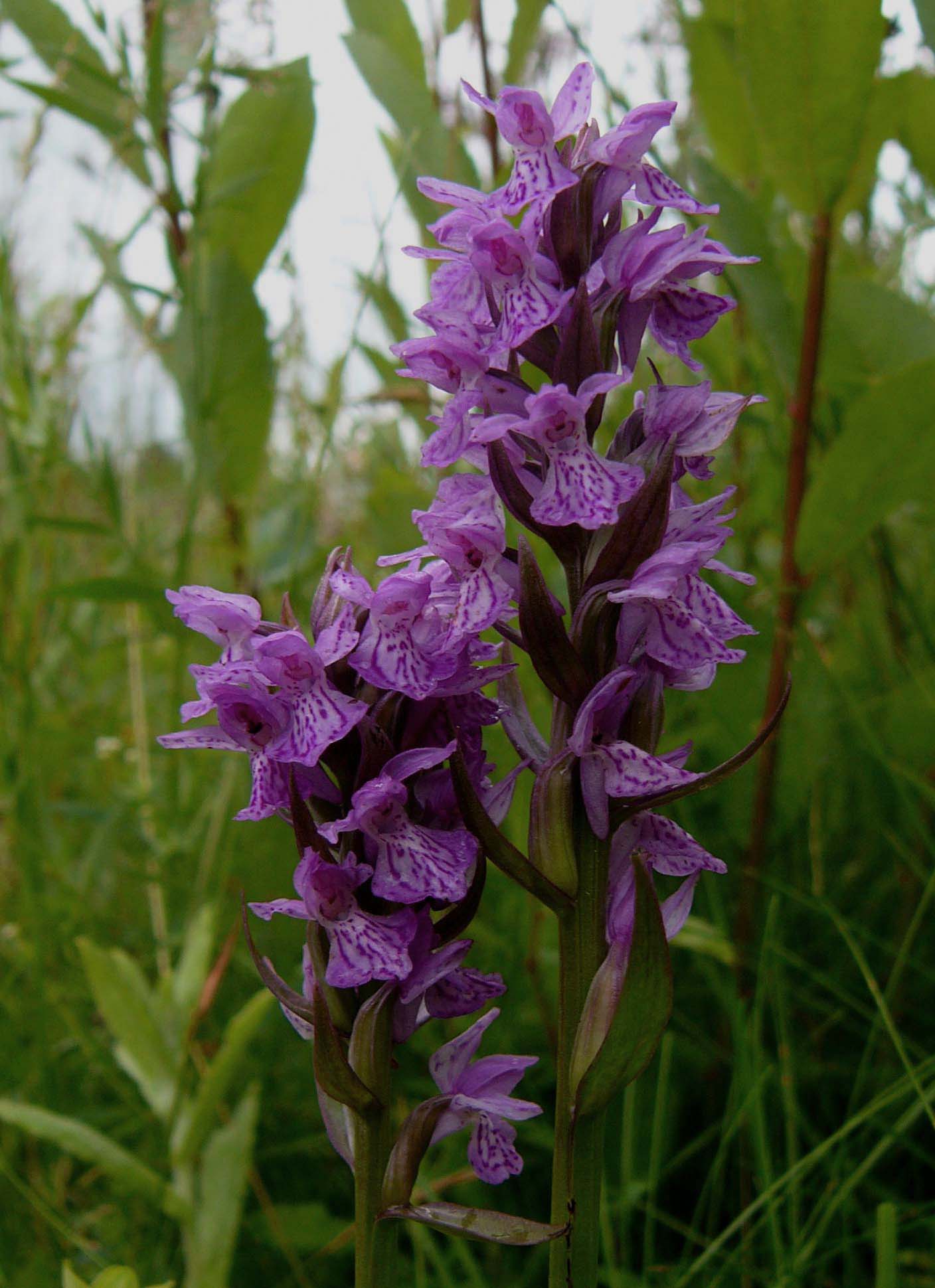
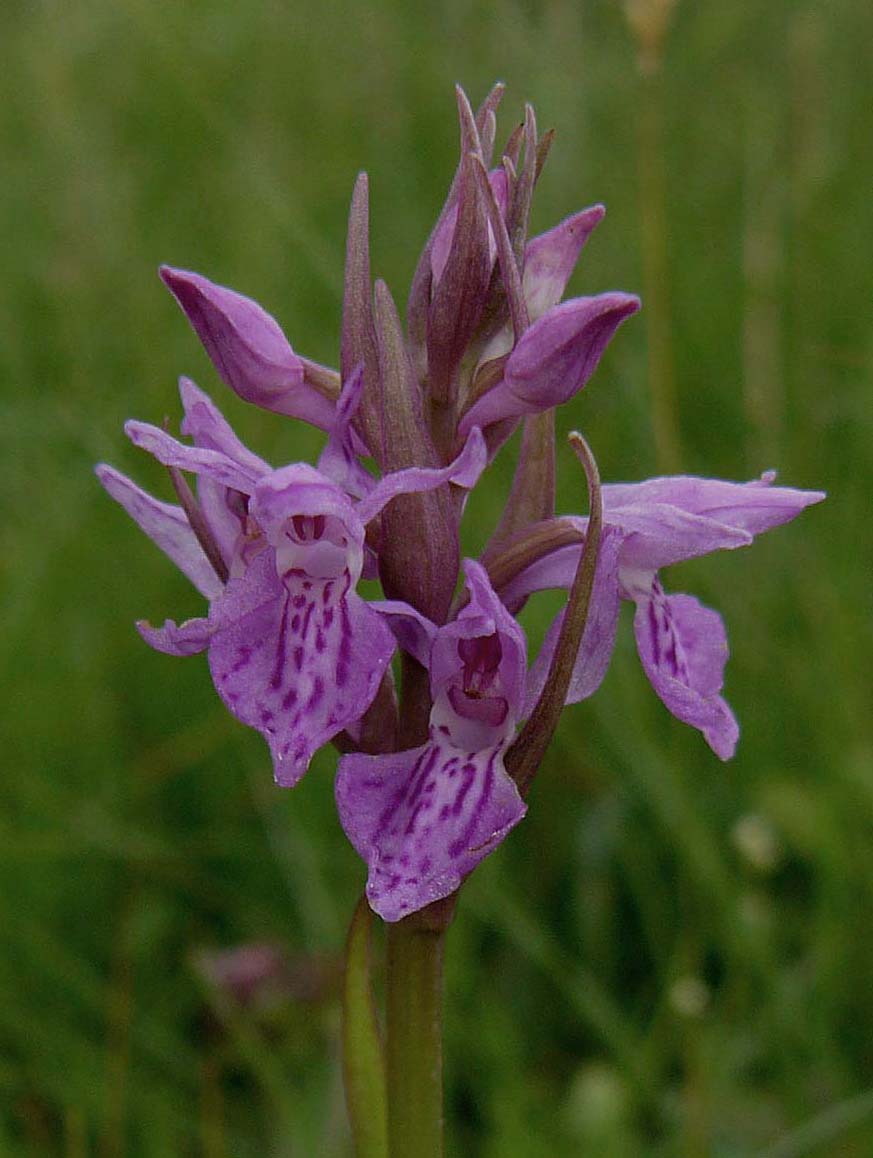
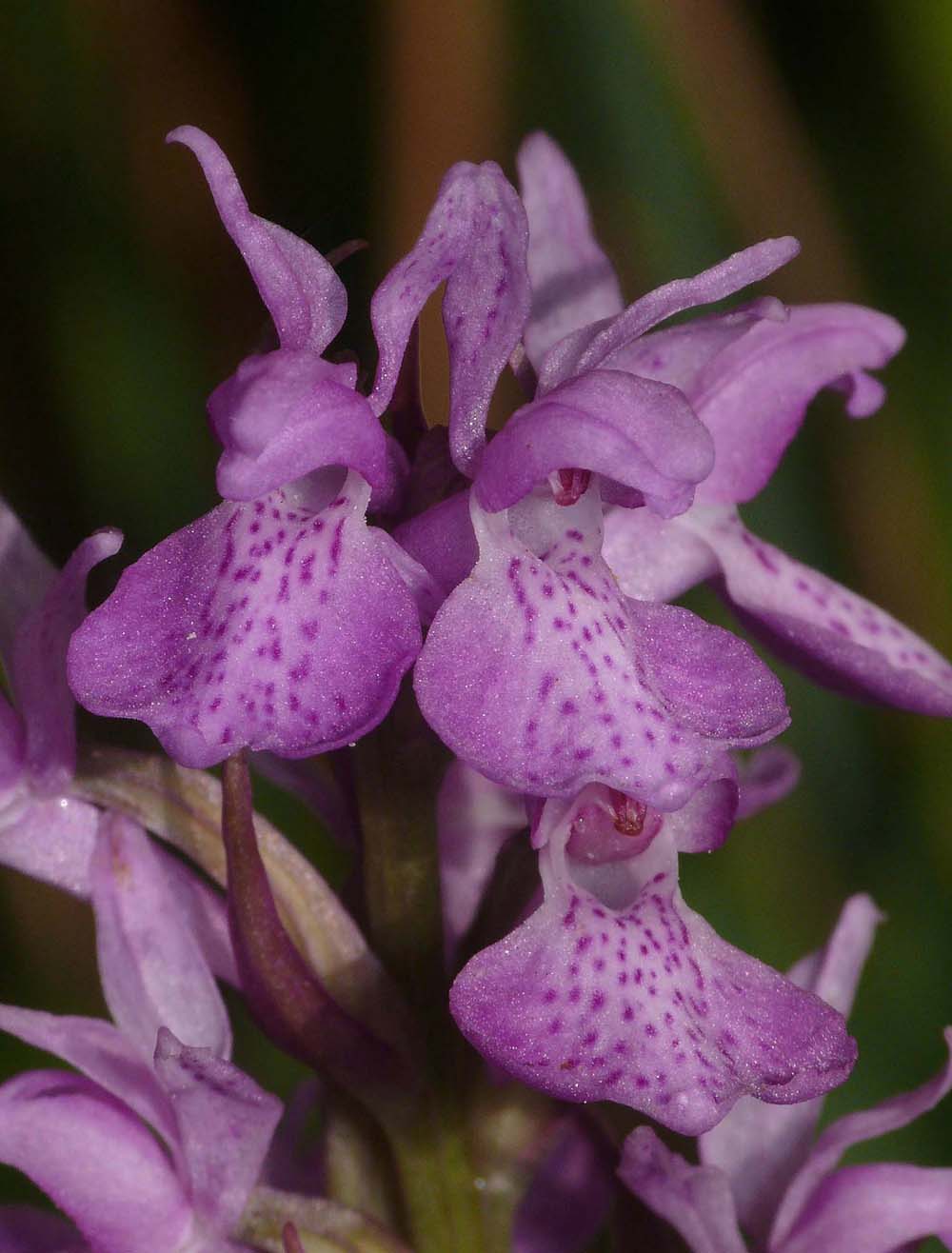
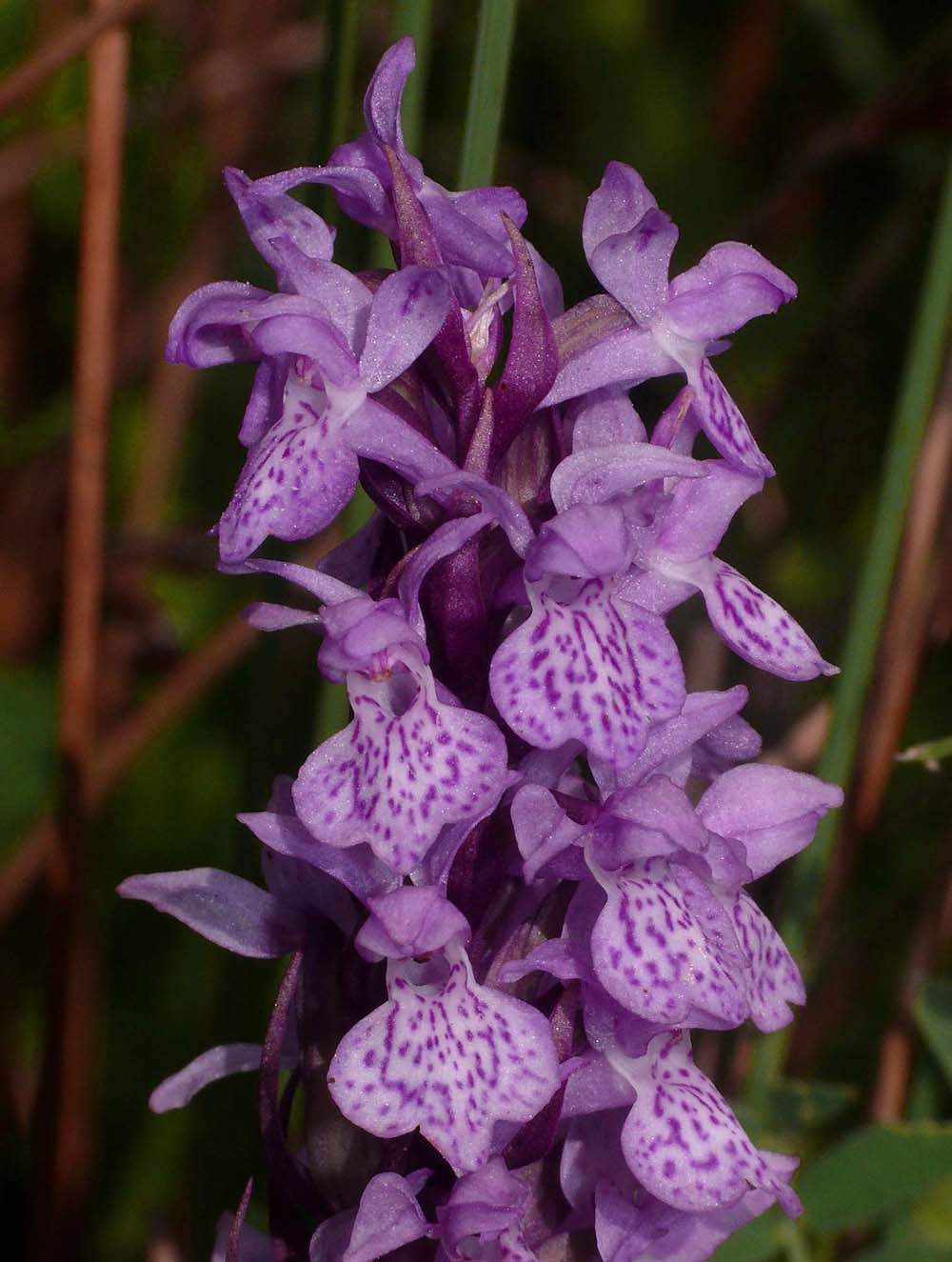
.